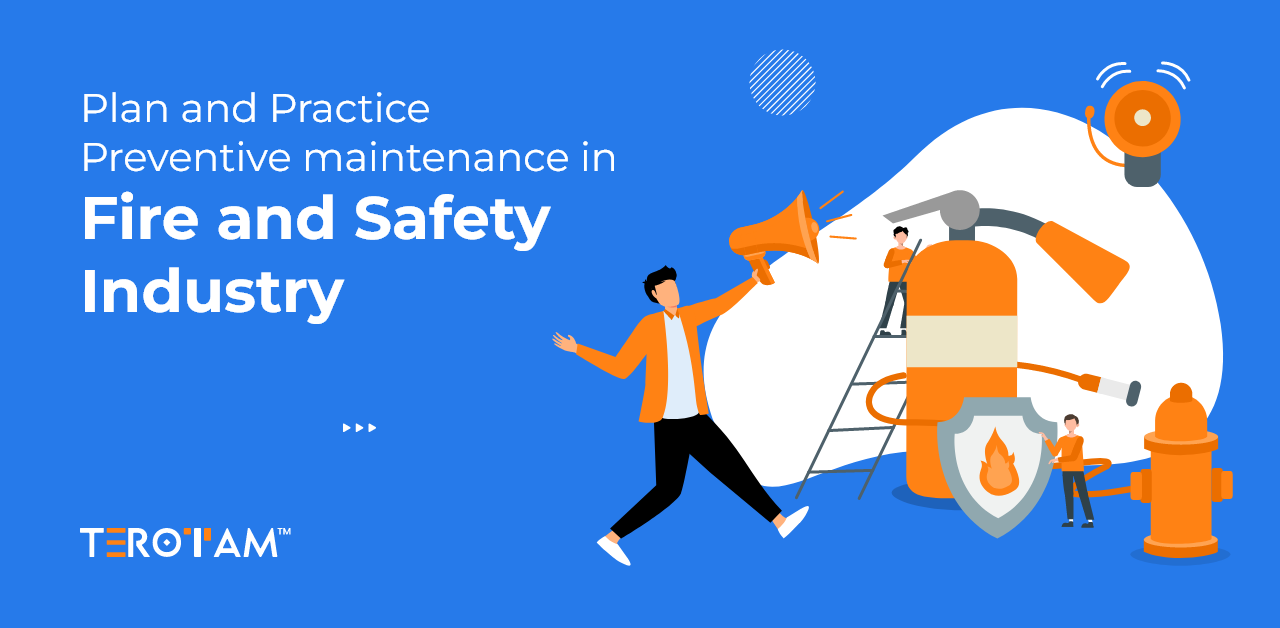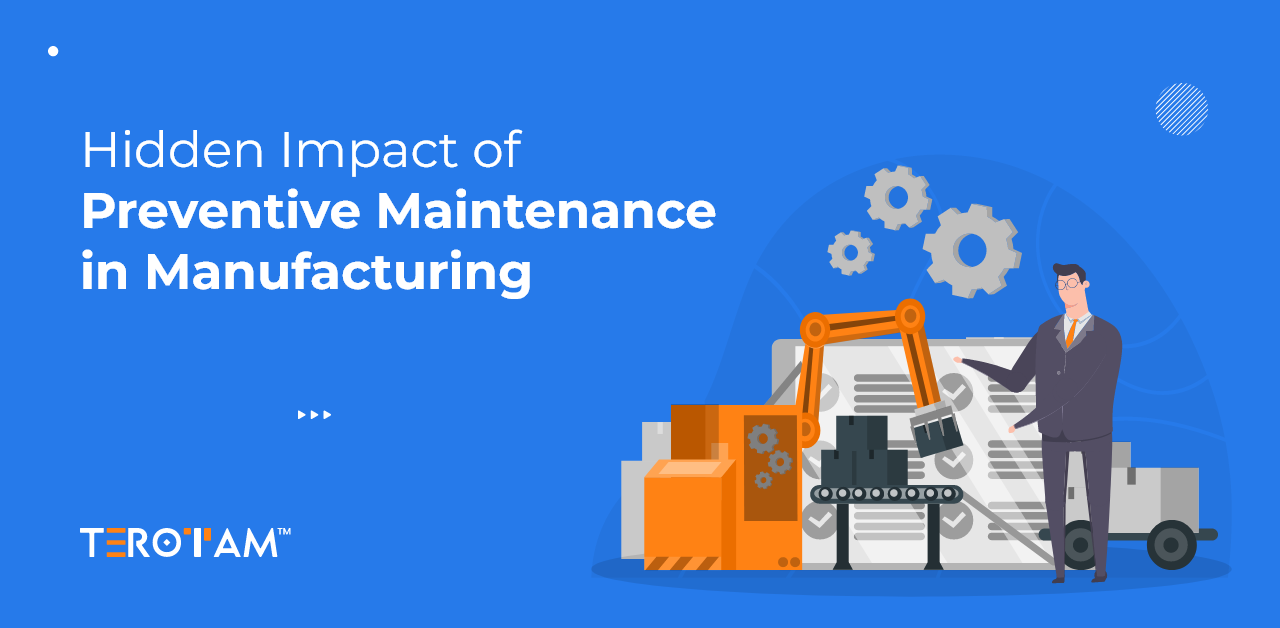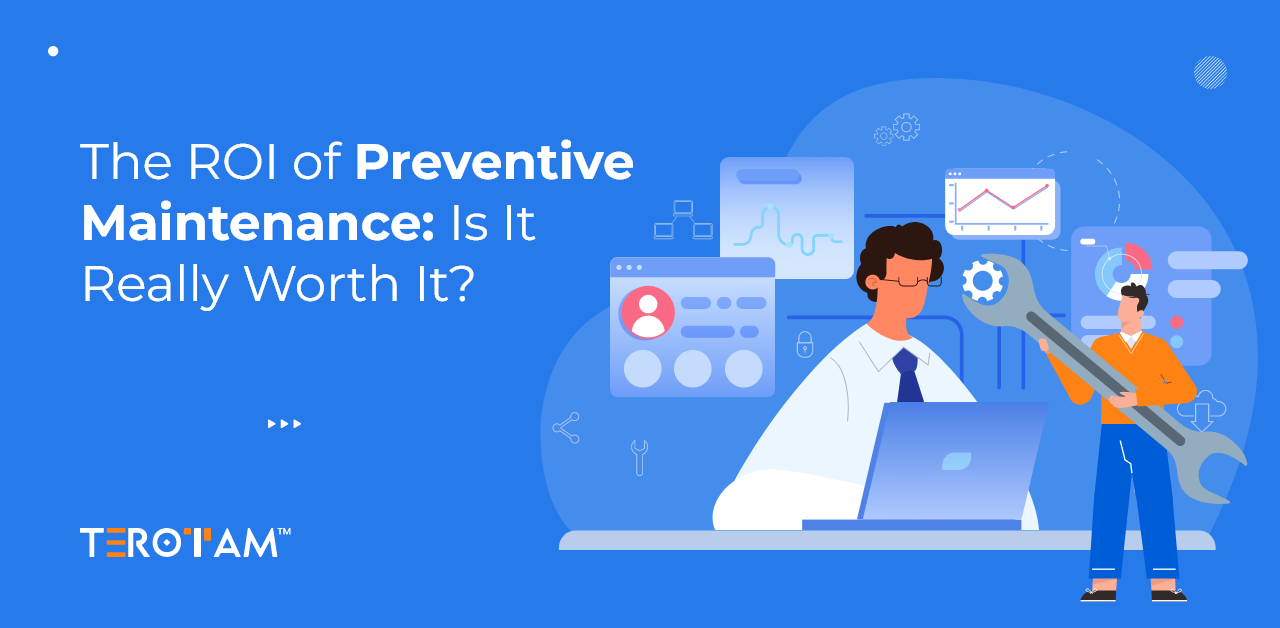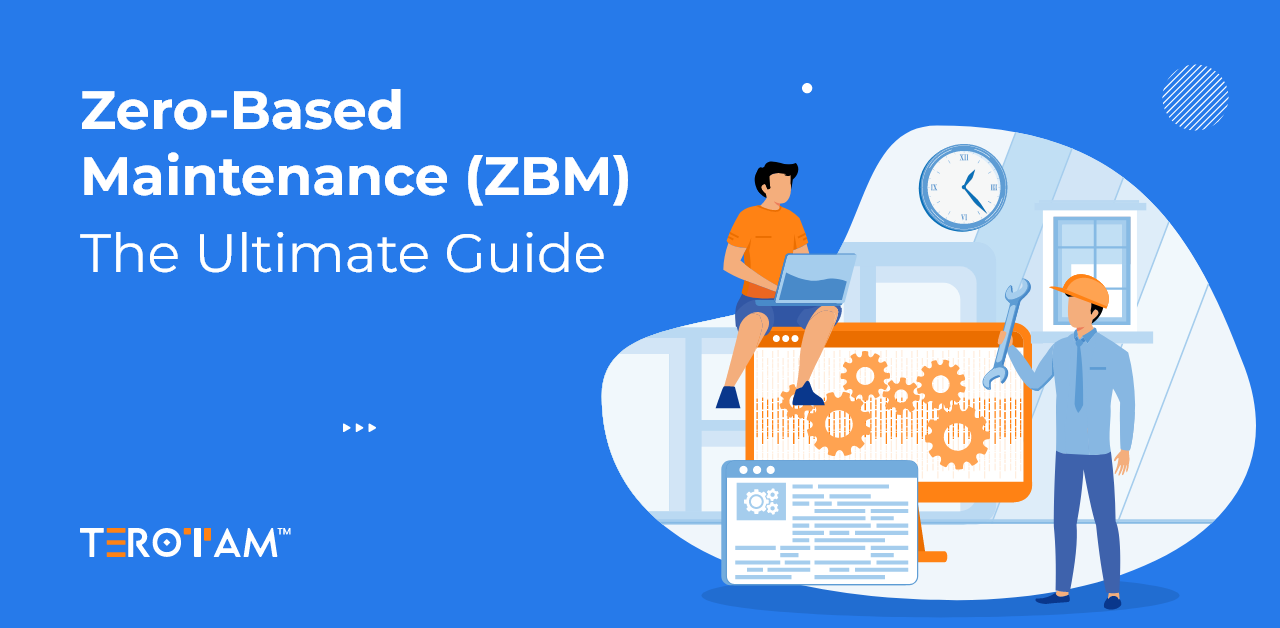In the fire and safety industry, failure is not an option. A single malfunction—whether it’s a blocked sprinkler head or a faulty smoke detector—can result in irreversible damage. That’s why preventive maintenance is not just a best practice; it’s an operational necessity. But implementing it effectively requires more than just routine checklists or calendar-based servicing.
Preventive Maintenance in this space needs a well-thought-out strategy, ongoing visibility into equipment condition, and strict compliance with regulations. From fire alarms and extinguishers to smoke control systems and emergency lighting, each component has a role that must be kept functioning under all circumstances. This article will walk through how you can strategically plan and execute preventive maintenance in the fire and safety industry—minimising failure risks and ensuring full operational readiness.
Why is preventive maintenance essential in fire and safety?
In this industry, you’re not just maintaining machines; you’re protecting lives and property. Preventive maintenance bridges the gap between equipment installation and dependable performance.
- Reduces unexpected failures: Regular inspections catch problems before they become critical. This improves equipment reliability in emergencies.
- Ensures regulatory compliance: Many jurisdictions require documented proof of maintenance for fire and safety systems. Non-compliance can lead to hefty fines or shutdowns.
- Extends equipment life: Routine servicing helps prevent excessive wear and tear, adding years to the lifespan of devices like fire panels or smoke detectors.
- Improves emergency response: Systems like fire sprinklers or gas suppression need to function instantly. Preventive maintenance guarantees they’re always ready.
- Enhances audit readiness: Maintenance logs and reports make audits faster and less stressful, especially in high-risk industries like manufacturing or oil & gas.
Creating a structured preventive maintenance plan
A good maintenance plan doesn’t just happen—it’s built on data, scheduling, and workflow integration. Planning sets the foundation for everything that follows.
Start by identifying all assets in the fire and safety network—this includes fire alarms, suppression systems, extinguishers, detectors, hoses, hydrants, and emergency lighting. Classify them based on risk impact and regulatory priority. Next, define service intervals for each based on OEM guidelines, usage frequency, and environmental exposure.
Create digital maintenance schedules that include checklists, responsible teams, and timelines. Integrating these plans with a maintenance management system ensures timely execution, automated reminders, and clear visibility across stakeholders.
Key elements to include in your maintenance program
Even the best plans fail without proper execution. A successful preventive maintenance program for fire and safety systems must incorporate the following:
- Asset tagging and tracking: Every asset should be uniquely identified for scheduled servicing, warranty tracking, and audit trails.
- Condition monitoring: Install sensors to monitor temperature, humidity, or battery voltage in fire detection systems for real-time health checks.
- Digitised inspection reports: Technicians should complete mobile checklists during site inspections and upload reports with photos and notes.
- Parts inventory: Maintain stock levels for critical spares like nozzles, hoses, batteries, detectors, and sprinkler heads.
- Compliance documentation: Keep records of all services, replacements, and tests in a centralised system for easy retrieval during inspections.
- Emergency readiness tests: Periodic simulations should be part of your plan to test how the system responds in real scenarios.
Training and assigning roles for consistent execution
Preventive maintenance is only as good as the people performing it. Assigning the right personnel and training them properly ensures procedures are followed with accuracy.
Designate responsibility to maintenance teams or certified technicians, and make sure each role is clearly defined—from inspection to reporting to escalation. Regular training is critical, especially as systems evolve with new sensors, panels, or regulations. This includes training on standard operating procedures, tool usage, digital reporting systems, and safety protocols.
Using role-based access in digital maintenance systems also keeps actions accountable and traceable.
Common challenges and how to overcome them
Even with a solid plan, preventive maintenance in fire and safety systems can run into issues that delay inspections or affect performance. Knowing what to expect helps in preparing workarounds.
- Missed schedules: Use calendar integrations and auto-reminders in your CMMS to avoid overlooked tasks.
- Manual record errors: Move away from paper logs to mobile forms and cloud-based reports to minimise human error.
- Unclear asset hierarchy: Without a well-defined asset tree, teams may skip low-visibility systems. Ensure complete asset mapping.
- Resistance from site staff: Educate operational teams about why equipment shutdowns for maintenance are necessary.
- Unavailability of parts: Forecast wear-and-tear based on historical data to order spares in advance.
Role of CMMS in preventive maintenance for fire and safety
Managing preventive maintenance across multiple fire and safety systems—often spread across large facilities or multiple sites—can quickly become overwhelming without the right digital backbone. This is where a Computerised Maintenance Management System (CMMS) becomes essential. It not only simplifies scheduling and tracking but ensures every asset gets the attention it needs—on time, every time.
TeroTAM CMMS is built to address these exact challenges. It provides a structured platform to plan, assign, execute, and monitor preventive maintenance for fire alarms, sprinklers, extinguishers, gas suppression systems, exit lighting, and more—without relying on paper trails or manual follow-ups.
With TeroTAM, here’s how your preventive maintenance becomes smarter and more reliable:
Automated service scheduling
Create frequency-based or condition-based schedules for each asset and eliminate guesswork with automated task reminders for technicians.
Real-time asset visibility
Track every fire safety device with geo-tagging, QR codes, or RFID. Know exactly what needs servicing, when, and where.
Mobile-friendly inspections
Field staff can complete checklists, upload images, log readings, and close work orders right from their mobile devices—no paperwork delays.
Centralised service records
Every inspection, repair, or part replacement is logged digitally, making it easy to present documented proof during audits or fire safety inspections.
Inventory and spare parts control
TeroTAM links your asset maintenance with inventory, helping you track critical spares like nozzles, valves, sensors, and extinguishing agents.
Escalation and alerts
If a system fails inspection or shows signs of degradation, TeroTAM can auto-escalate the issue to supervisors or compliance teams before it becomes a threat.
Multi-site coordination
For companies managing several locations, TeroTAM lets you standardise procedures, compare performance, and ensure all sites meet compliance equally.
What sets TeroTAM apart is its ability to bring maintenance, asset management, compliance tracking, and communication into one unified system. For fire and safety teams who cannot afford lapses or delays, this level of control isn’t optional—it’s essential.
Whether you’re maintaining a single facility or a national network, TeroTAM CMMS ensures that every fire and safety system is inspected, tested, and ready—without missed schedules, lost paperwork, or last-minute scrambling.
Conclusion
In the fire and safety industry, waiting for something to go wrong before taking action can come at a high cost. Systems like fire alarms, extinguishers, and emergency lighting need consistent upkeep—not only to meet safety standards but to ensure they perform reliably when required. A reactive approach simply isn’t enough when lives and assets are at stake.
Using a digital system like TeroTAM CMMS helps you stay organised, proactive, and compliant. From automating service reminders to maintaining accurate inspection logs, it removes the clutter from manual processes and brings everything into one easy-to-manage platform. You get real-time visibility, better control over assets, and peace of mind knowing that no inspection or servicing task slips through the cracks.If you’re ready to simplify your preventive maintenance and make your fire and safety operations more efficient, we’d love to help you get started. Drop us a line at contact@terotam.com and let’s explore how TeroTAM can support your safety goals with a smarter, more dependable system.










